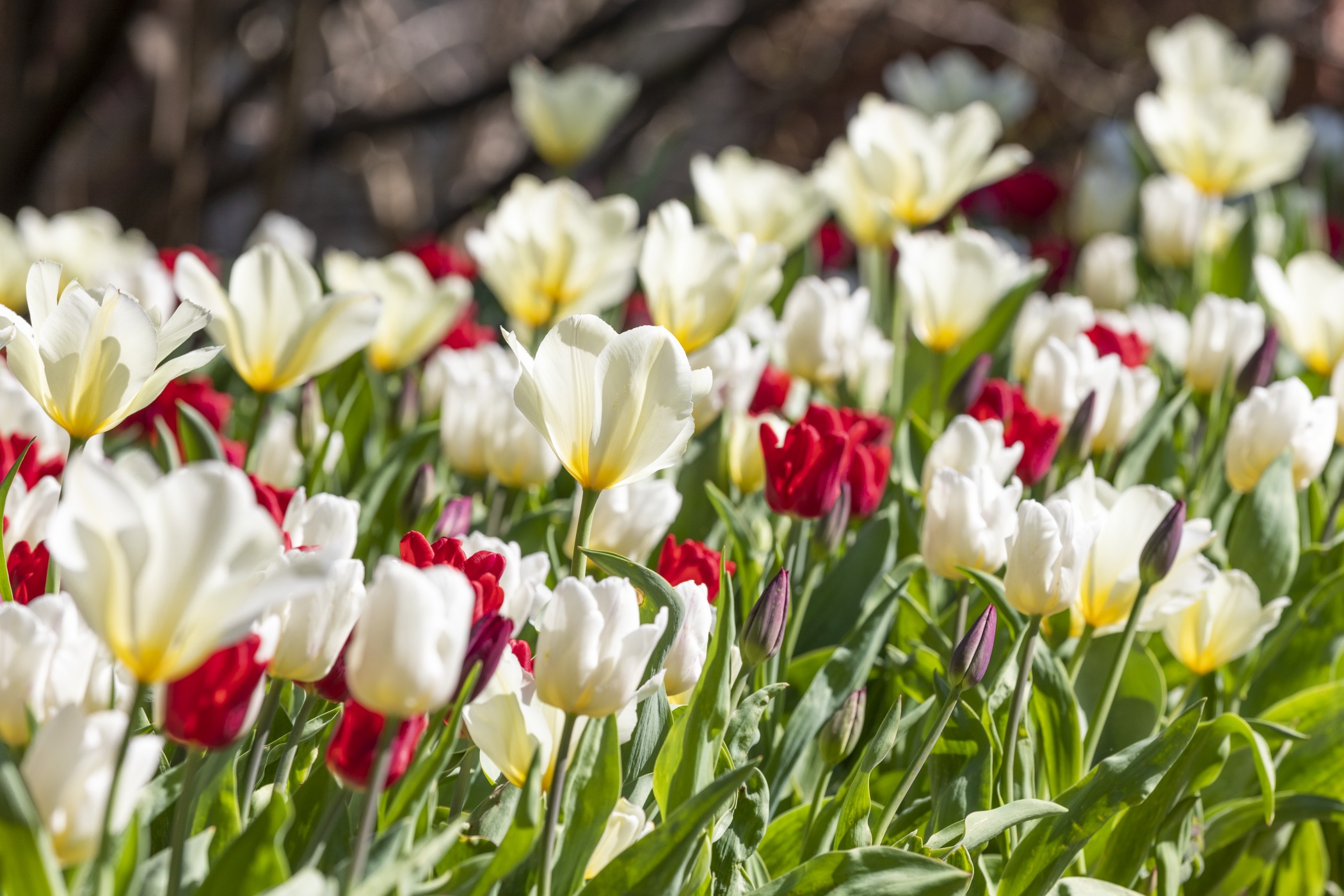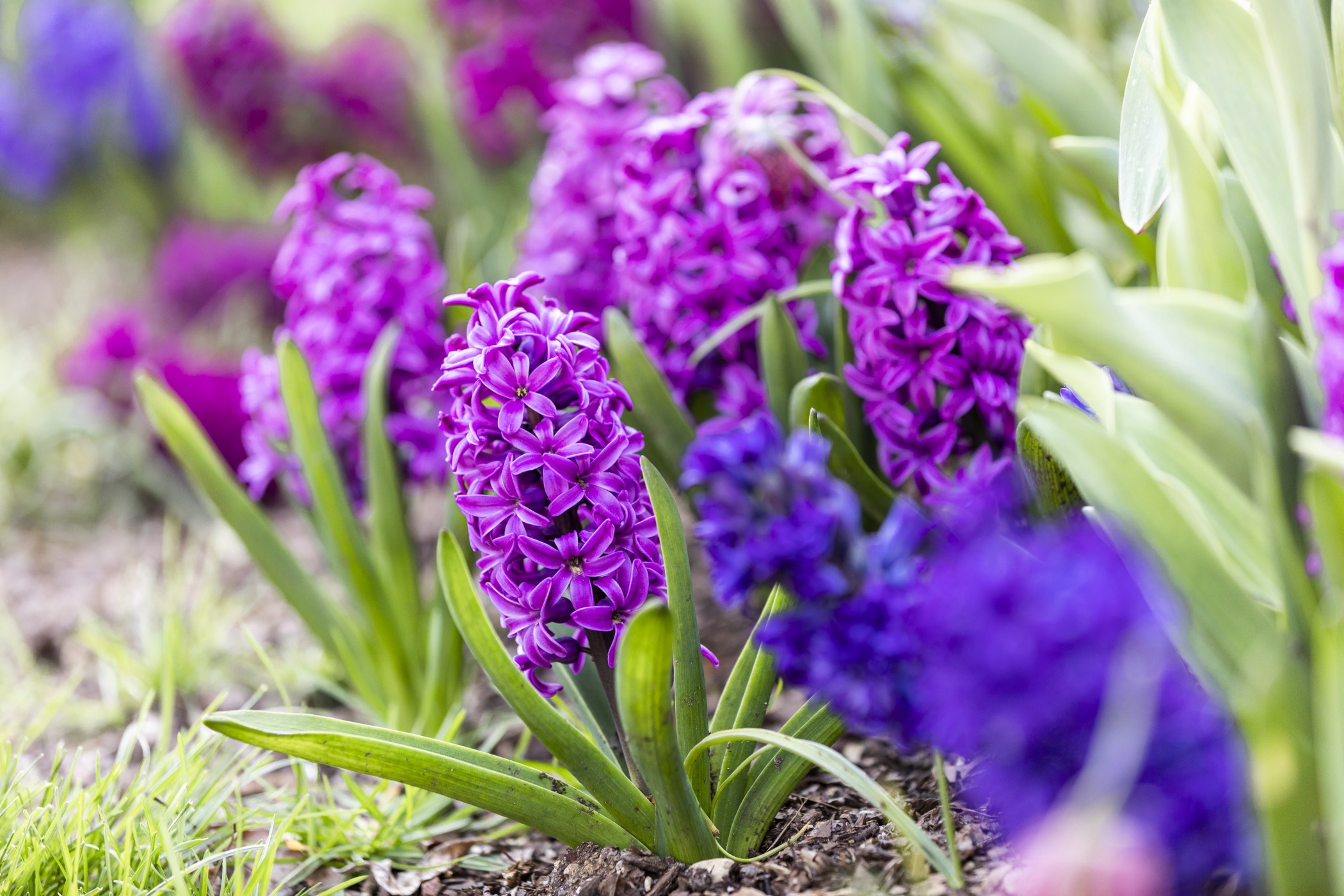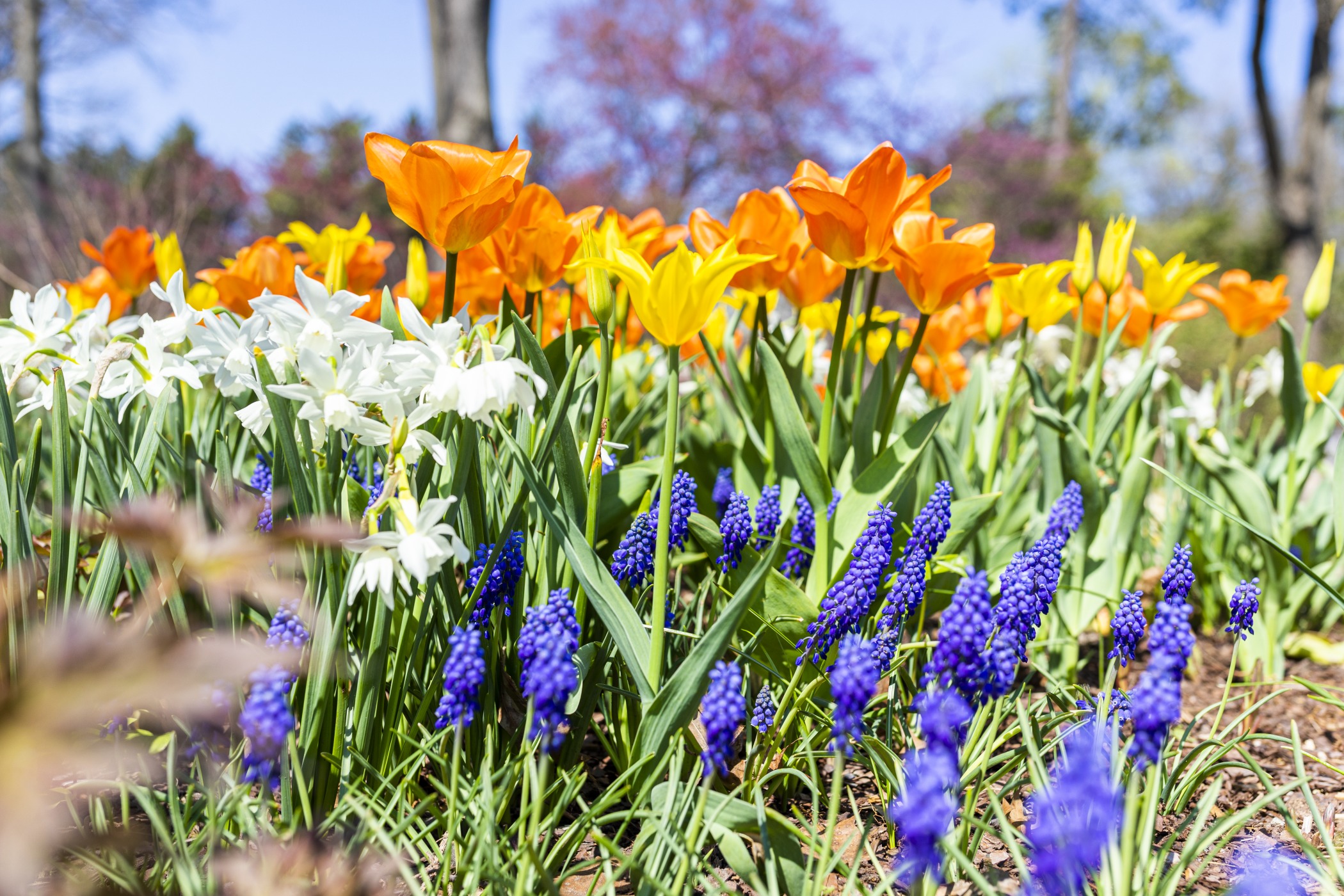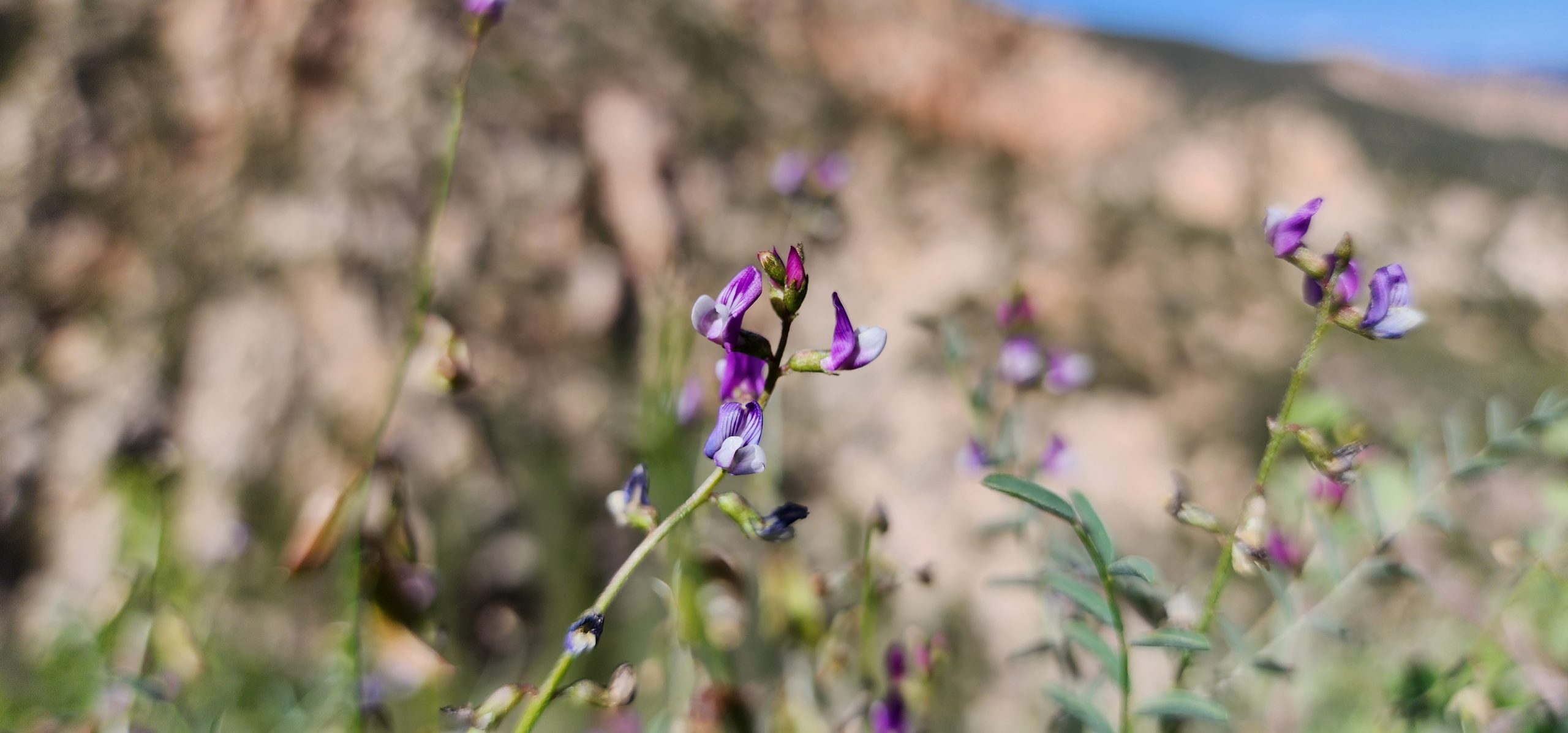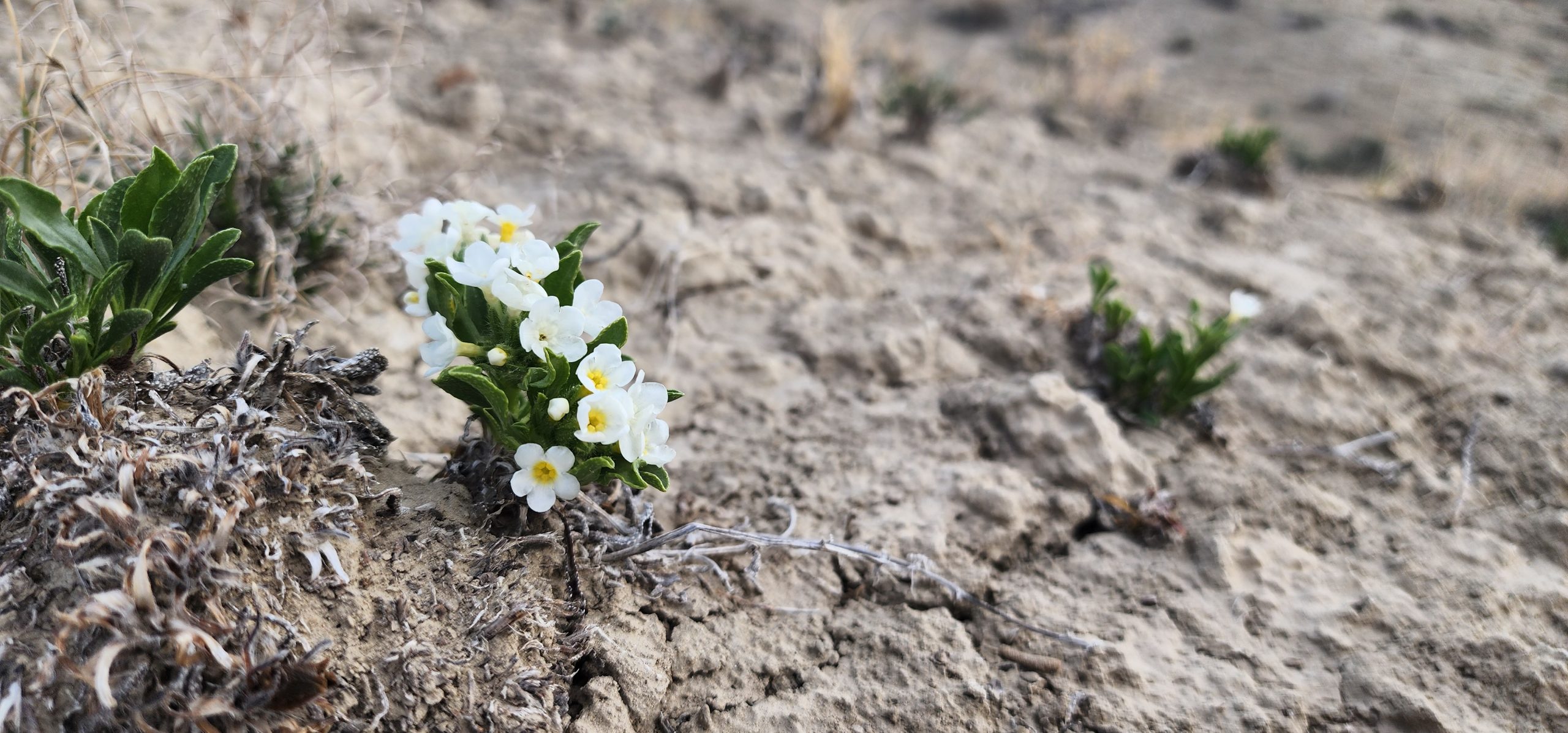Save Plants
CENTER FOR PLANT CONSERVATION
June 2021 Newsletter
This month we explore the many reasons why humans should Save Plants. From their sheer beauty to their ability to heal us from disease and unease, plants play a fundamental role in maintaining human well-being. I know you’ll enjoy hearing how our Participating Institutions understand this and communicate these values to the public. Our Conservation Champions Carolyn and Tony Schmitz describe their own journeys to loving plants and the process they undertook to create their wonderful “Save Plants” video. Please feel free to tap into any of these articles the next time you are asked, “Why should I care about plants?”
Wishing you and your families continued good health,
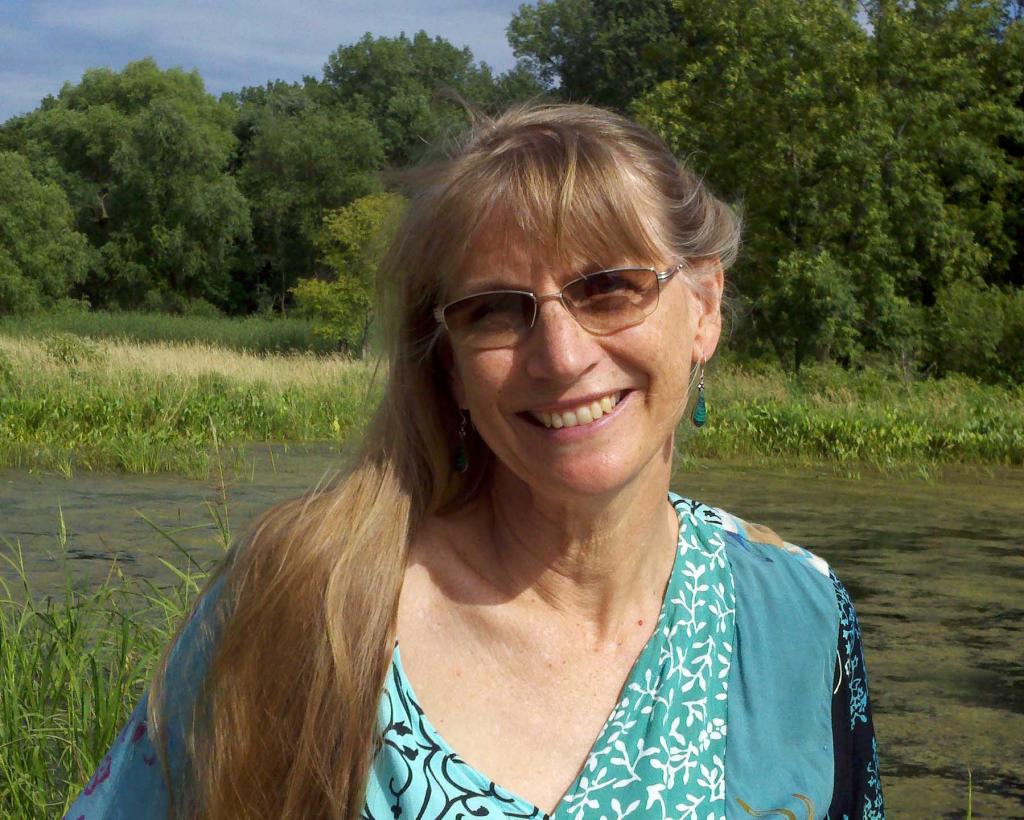
Joyce Maschinski
CPC President & CEOWelcome to CPC: Zoo New England
Our network is growing, and with it grows our ability to save rare and endangered plants from extinction. Zoo New England (ZNE), located in Boston, Massachusetts, has a mission “to inspire people to protect and sustain the natural world for future generations by creating fun and engaging experiences that integrate wildlife and conservation programs, research, and education.” To that end, ZNE has been developing new organizational practices, weaving conservation into their onsite visitor experiences, and spearheading plant conservation projects to advocate for plants and biodiversity. These efforts made ZNE an excellent candidate for the CPC network, and the CPC Board of Trustees voted to approve their admission to the network in February 2021.
In recent years, ZNE has placed strategic focus on honing their expertise in plant conservation to equally emphasize both plant and wildlife conservation in their work and onsite experiences. They have led small-scale reintroductions of a rare plant species in the Metro Boston area, the state-listed species, New England blazing star (Liatris novae-angliae), and they have worked with regulatory agencies to monitor populations of threatened Britton’s violet (Viola brittoniana) and the related Viola pectinata. ZNE’s robust plant collection – a highlight of their onsite visitor experience – includes pollinator plants in their butterfly exhibit, an organic garden, and a rain garden. To strategically expand existing plant collections, ZNE recruited horticulturists who collaborate with conservation staff in developing curated plant collections that reflect the geographic regions their animal collections are endemic to and also educate visitors about the role of plants in an animal’s ecosystem. Additionally, their team is developing new collections of native plants, succulents, carnivorous plants, and more.

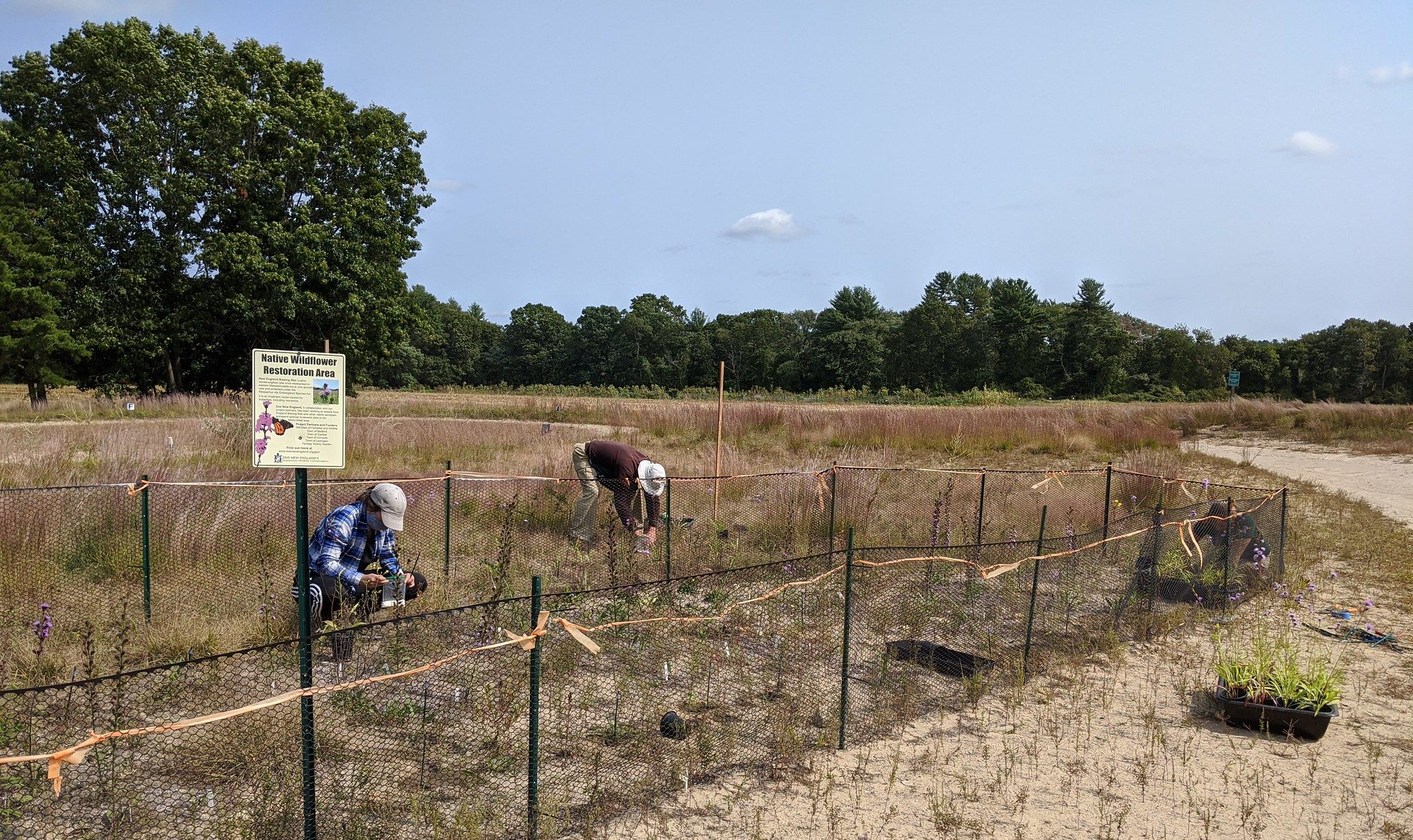
On an broad scale, ZNE has partnered with Dr. Bryan Connolly of Eastern Connecticut State University to conserve several species of rare Solanum native to the Caribbean. Utilizing ZNE greenhouses, the team has established captive populations of Solanum conocarpum from the U.S. Virgin Islands and Solanum ensifolium from Puerto Rico. Both species are critically endangered, with Solanum ensifolium believed to be nearly extinct in the wild. ZNE staff members have traveled to St. John, U.S. Virgin Islands, to assist with local reintroduction projects for Solanum conocarpum. ZNE hopes to eventually assist with reintroduction projects of two additional critically endangered Virgin Islands species, Erythrina eggersii and Eugenia earhardtii.
As they continue in this crucial work, Zoo New England is eager to connect and collaborate with other Participating Institutions and to contribute to our collective efforts to Save Plants. Their team’s dedication to plant conservation and educating the public on the critical importance of biodiversity for all life on Earth makes them an exciting addition to the CPC network.
Beyond Beauty: Blending Art and Nature to Engage
Plants are beautiful and inspiring. They feature prominently on museum walls everywhere, from colorful flower arrangements to expansive landscapes covered in grasslands or dotted with trees. But it is rare for an art museum to actively connect art and nature, moving beyond galleries into gardens and natural parklands. Newfields is such a museum, shaping itself over recent decades to be a place for nature and the arts. Engagement with art and nature creates an aesthetic experience, inviting reflection, critique, and appreciation. Throughout the museum’s facilities, visitors are encouraged to view and interact with the plants and other elements of nature that make the Newfields experience unique.
Within the 100 acres of The Virginia B. Fairbanks Art & Nature Park, Newfields manages both landscaped and natural lands, supporting a beautiful, functioning ecosystem that hosts spring wildflowers, feeds birds, and inspires guests. Throughout Fairbanks Park, permanent and temporary works of art – many site-responsive, inspired by the grounds themselves – invite people to think about their connection to nature and respond to the art and its surroundings.
“Chop Stick” is a visitor favorite. Designed by the architecture duo Visiondivision, the outdoor pavilion was crafted almost entirely from a single tulip tree, the state tree of Indiana. Incorporation of the tree’s form in the supports for swings, and its rough bark in the siding and shingles of a refreshment shack, retains the beautiful shapes and textures of the original tulip tree while enabling a clear view of all of the pavilion’s features. Yet this beautiful piece is not meant to last forever. To reflect the real world, it changes with the passage of time, with pieces deteriorating and being removed as they become unsafe. Some pieces are more ephemeral, while others are relatively permanent – a spectrum shared by features in nature.
In other spaces, the role of plants in the art is less obvious. For example, “Park of Laments,” by Alfredo Jaar, has thousands of individual plants – all native to Indiana – which play an integral role in providing a particular setting for the piece. Visitors walk down a ramp and through a dark tunnel to emerge in a small, isolated park. Here nature serves as an insulator to create a safe place for contemplation. Throughout the park, visitors are encouraged to slow down, exhale, and take in the visuals and the total experience of each setting.
Plants have also helped guests to slow down inside the galleries of the Indianapolis Museum of Art at Newfields. During the inaugural Art in Bloom event, colorful floral creations by local artists are displayed alongside the permanent art collection pieces that inspired them. Staff see visitors slow down as they move through the galleries, considering the florists’ intentions – looking at both flower arrangements and art with different eyes. Upcoming Art in Bloom event managers will seek to evaluate this behavioral change, to better understand the synergy of how people interact with the beauty and power of plants and art.

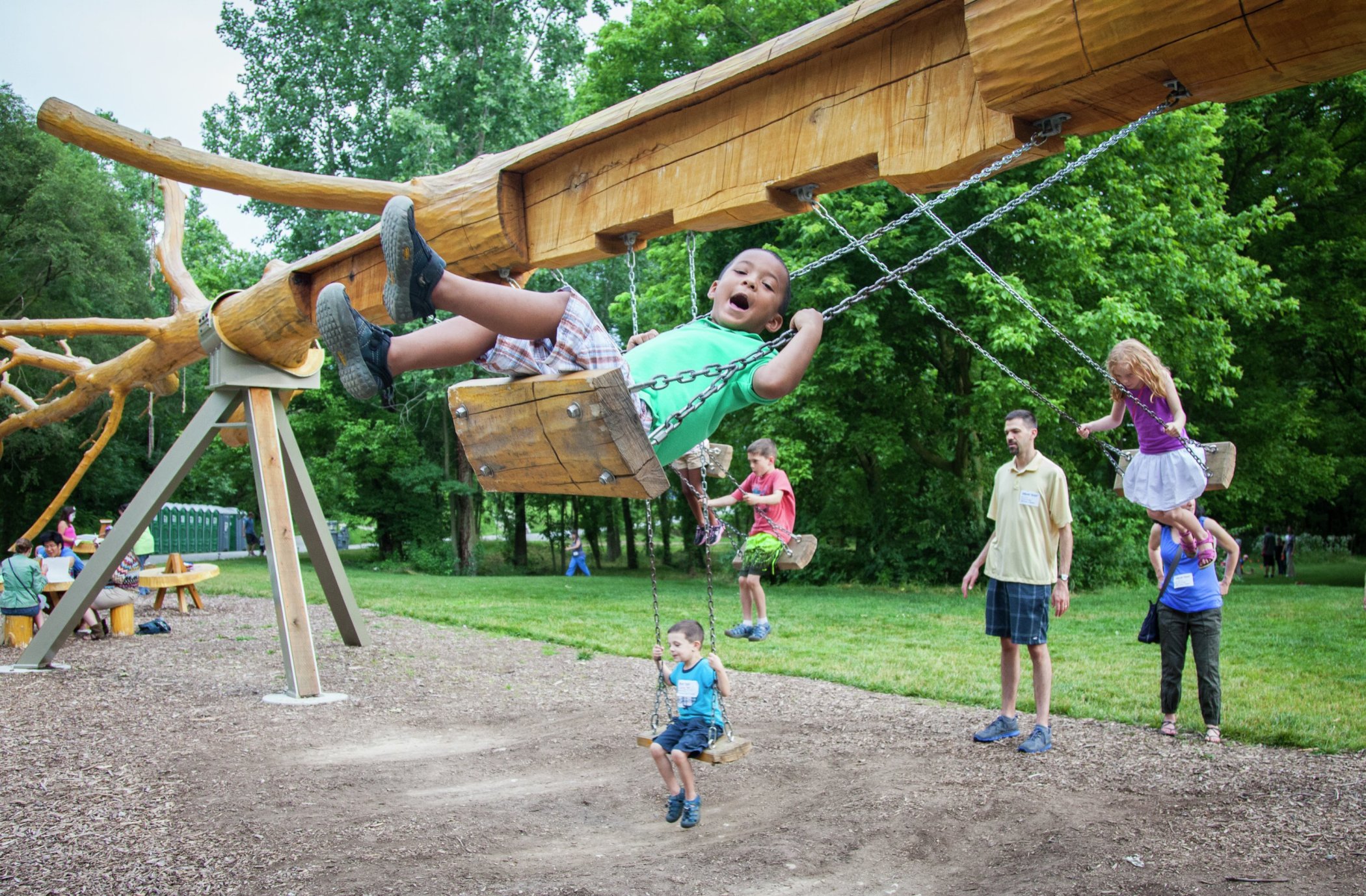
Beyond inviting visitors to expand their enjoyment of Newfields’ assets, many of the experiences are designed for other behavioral changes and learning outcomes. These range from interpretation and stories to providing resources, such as information about the Indiana Native Plant Society. Education programs start young, with annual summer camp programs focused on bridging art and nature. Lectures and symposiums connect adults to broader subjects, including how climate change will impact the plants they see.
The upcoming installation of a native flora pollinator garden in Fairbanks Park will provide further opportunities for Newfields to share climate change stories, drawing on the aesthetic appeal of wildflowers. The project will transform an area that was heavily impacted by previous land uses and covered in invasive plants, including a view-blocking tree of heaven. By replacing these invasives, beautiful native blooms will add resiliency to the floodplain habitat. The visually appealing natives will be in sight of the historical Lilly House, inviting people drawn to Newfields’ art and historical assets to experience the Park. During blooming season, attention garnered by the garden planting will provide opportunities for team members to share stories of the benefits of these native plants and lessons learned from becoming ecologically-minded land managers at Newfields.
-

Installation view of Art in Bloom. Robert Indiana (American, 1928–2018), LOVE, 1970, Cor-ten steel, 144 × 144 × 72 in. Indianapolis Museum of Art at Newfields, Gift of the Friends of the Indianapolis Museum of Art in memory of Henry F. DeBoest. Restoration was made possible by Patricia J. and James E. LaCrosse, 75.174 © Morgan Art Foundation / Artists Rights Society (ARS), New York. -
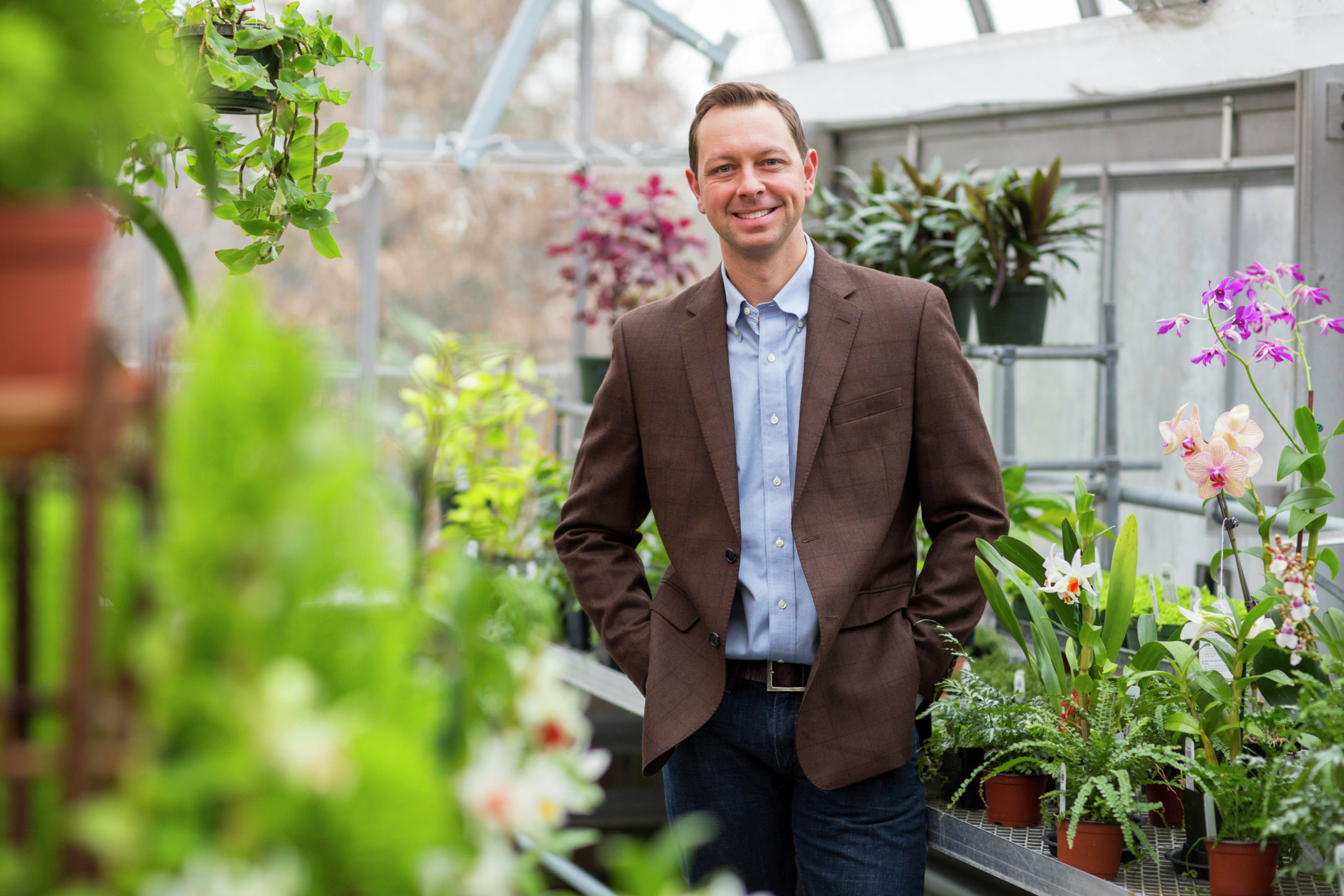
Jonathan Wright. Image courtesy of Newfields. -

Lilly House 2013. Image courtesy of Newfields.
The aesthetic appeal of plants is undeniable in all of its manifestations: blending into a landscape; bringing pops of color to a field, painting, or garden; or in creative floral art. As with art, experiences with plants and nature can be varied, inviting people to engage in spaces like museums, gardens, and parks. By drawing art-goers out into their beautiful grounds, Newfields has intertwined plants and art and made both more approachable.
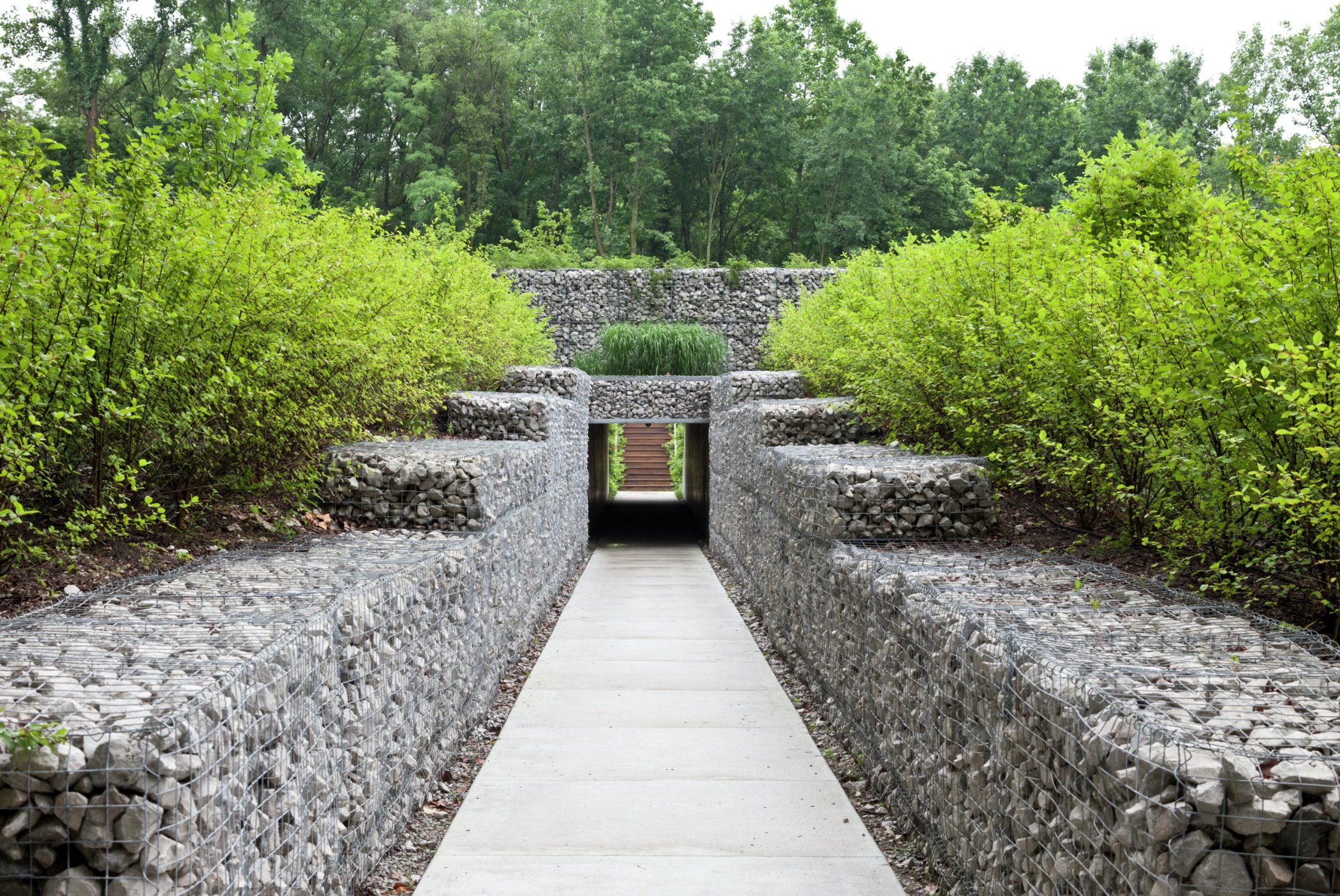
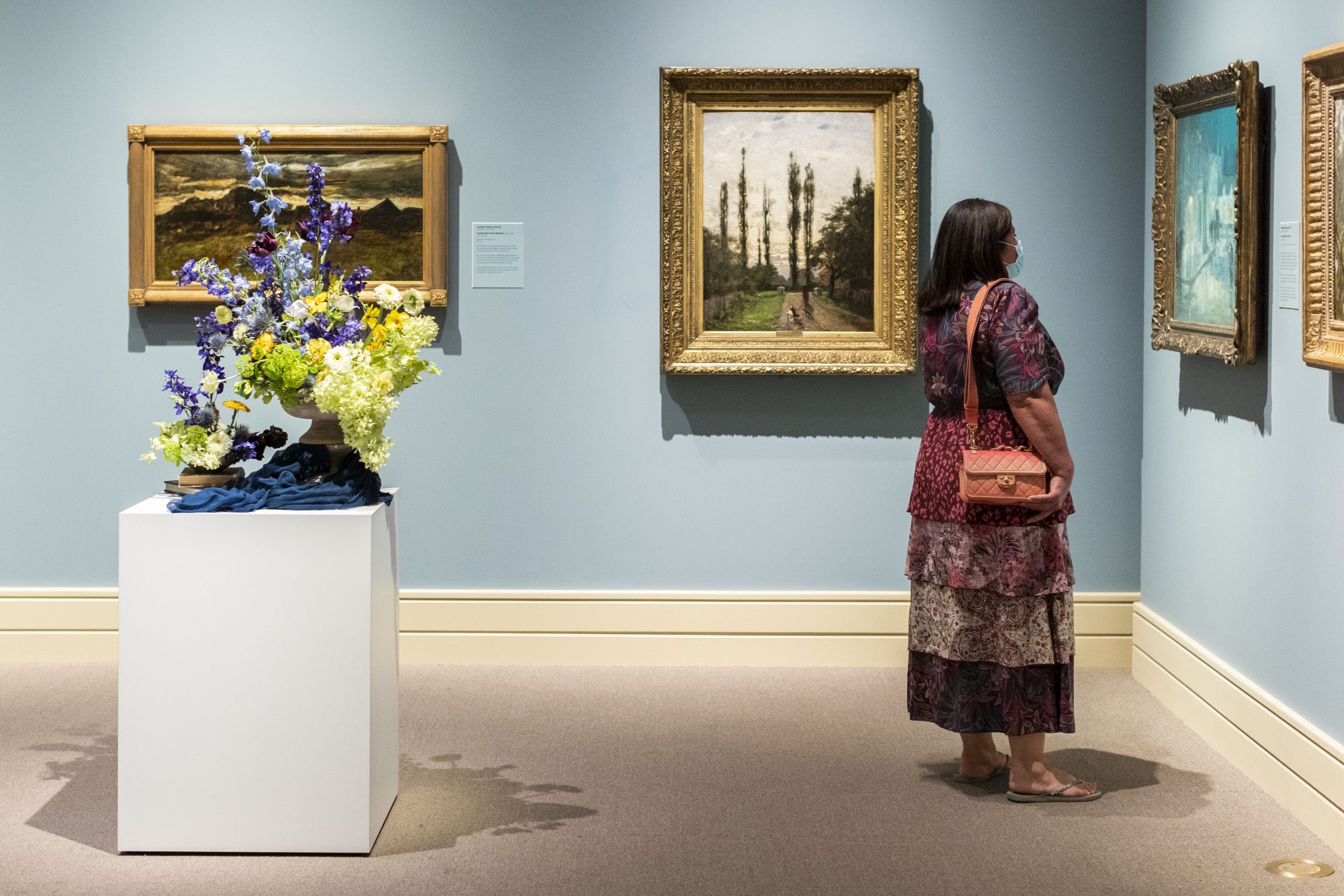
The Healing Power of Plants
A frequent argument for the conservation of biodiversity is the need to protect a cure for cancer, or other medical miracle, hiding away in some undiscovered plant in the rainforest. While it’s true that plants unknown to science – and their potentially unique chemical compounds – are at risk, it’s also true that people across the world already reap the medical benefits of plants. According to Dr. Jim Affolter, Director of Science and Conservation at the State Botanical Garden of Georgia, “It is no exaggeration to say that the majority of people in the world still rely on traditional medicine, including herbal medicine.”
Medicinal plants are used by a variety of people and in a variety of forms. Many rely on plants because they lack access to pharmaceutical medicines, due to unavailability or expense. Others find it easier to work with the plants in their own backyard or region. Still others actively turn from western medicines, seeking gentler and time-tested plant-based remedies and holistic medical approaches. Options include growing or foraging for plants, buying from a local purveyor, or buying over-the-counter products in a local market. In the U.S., herbal medicine has waxed and waned through the centuries. A recent resurgence is credited to reduced regulation by the Food and Drug Administration following the Dietary Supplement Health and Education Act of 1994.
Despite ups and downs over time throughout the U.S., Native American and Appalachian communities of the Southeast maintain strong herbal medicine traditions. American ginseng, goldenseal, black cohosh, saw palmetto, yellowroot, and mayapple are examples of species valued by local populations. Recognition of the medicinal value of these plants can lead to a more general appreciation of plants and access to forests. On the downside, foraging and commercial collecting place additional pressures on wild populations of these plants.
-
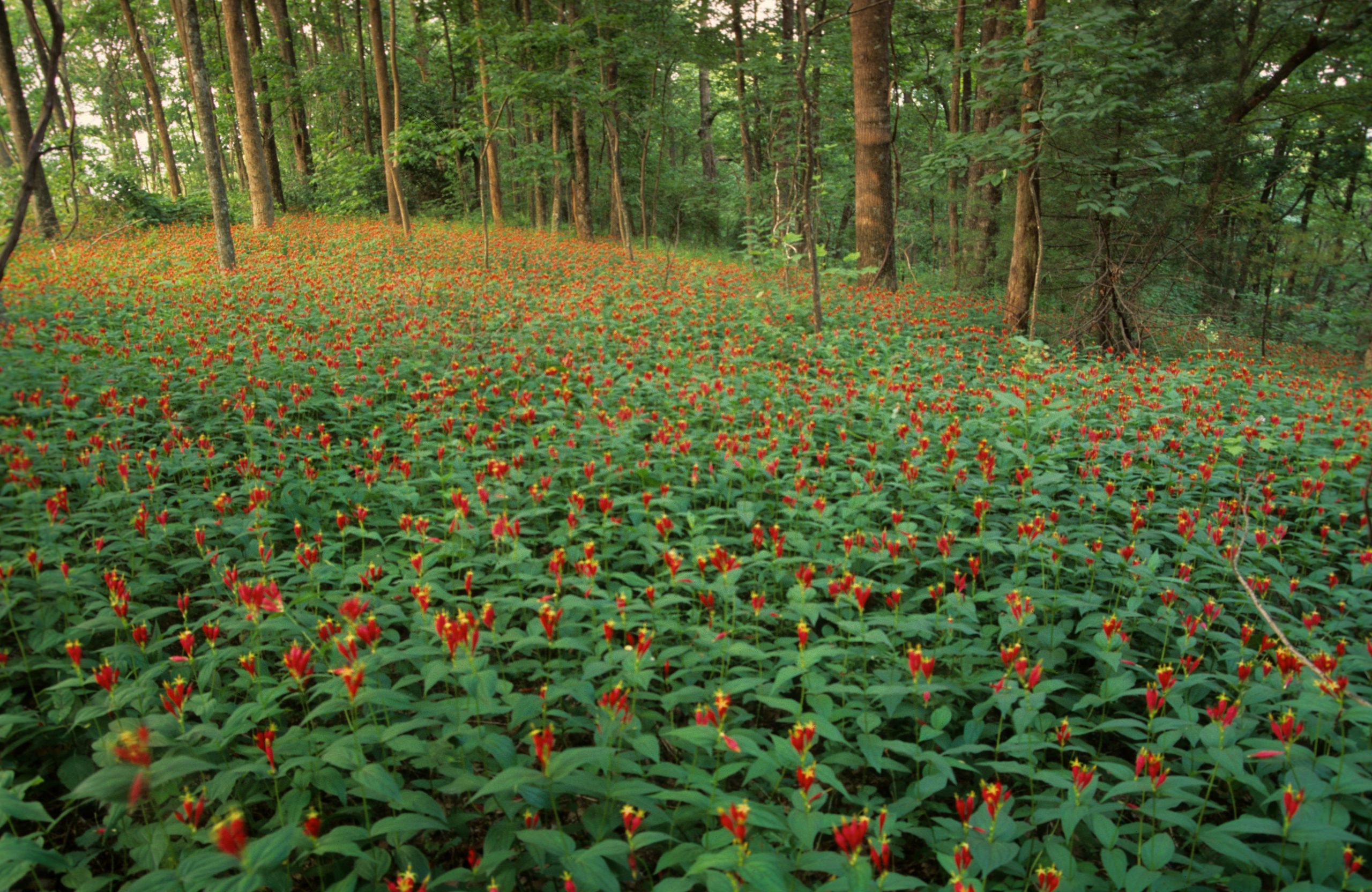
A forest popoulation of Indian pink (Spigelia marilandica). Anecdotally, when Dr. Affolter was conducting a general study on Indian pink, it was difficult to find large populations, which could a legacy of the heavy harvest of colonial times. Photo by Hugh and Carol Nourse -
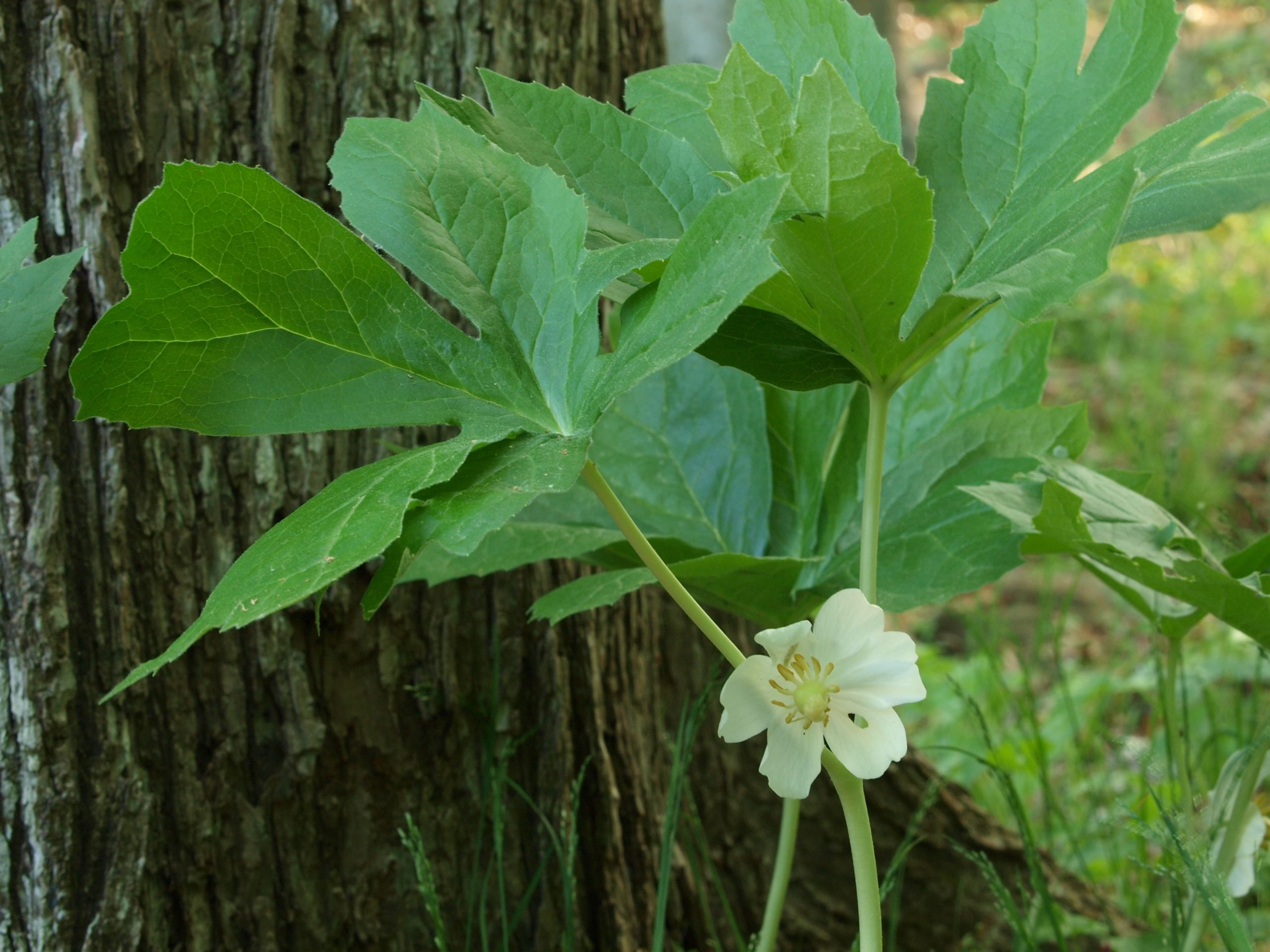
The dried roots of Mayapple (Podophyllum peltatum) were used by some Native American tribes as a purgative, and the medicine was quickly adopted by early colonial doctors. It is caustic on skin, such that it has been used both historically and contemporarily as a topical treatment for various types of skin lesions. More recently, it has been found to have anti-cancer properties and was found both to be anti-tumoural and to cause toxic side effects in the patient. State Botanical Garden of GA Photo by Hugh and Carol Nourse -
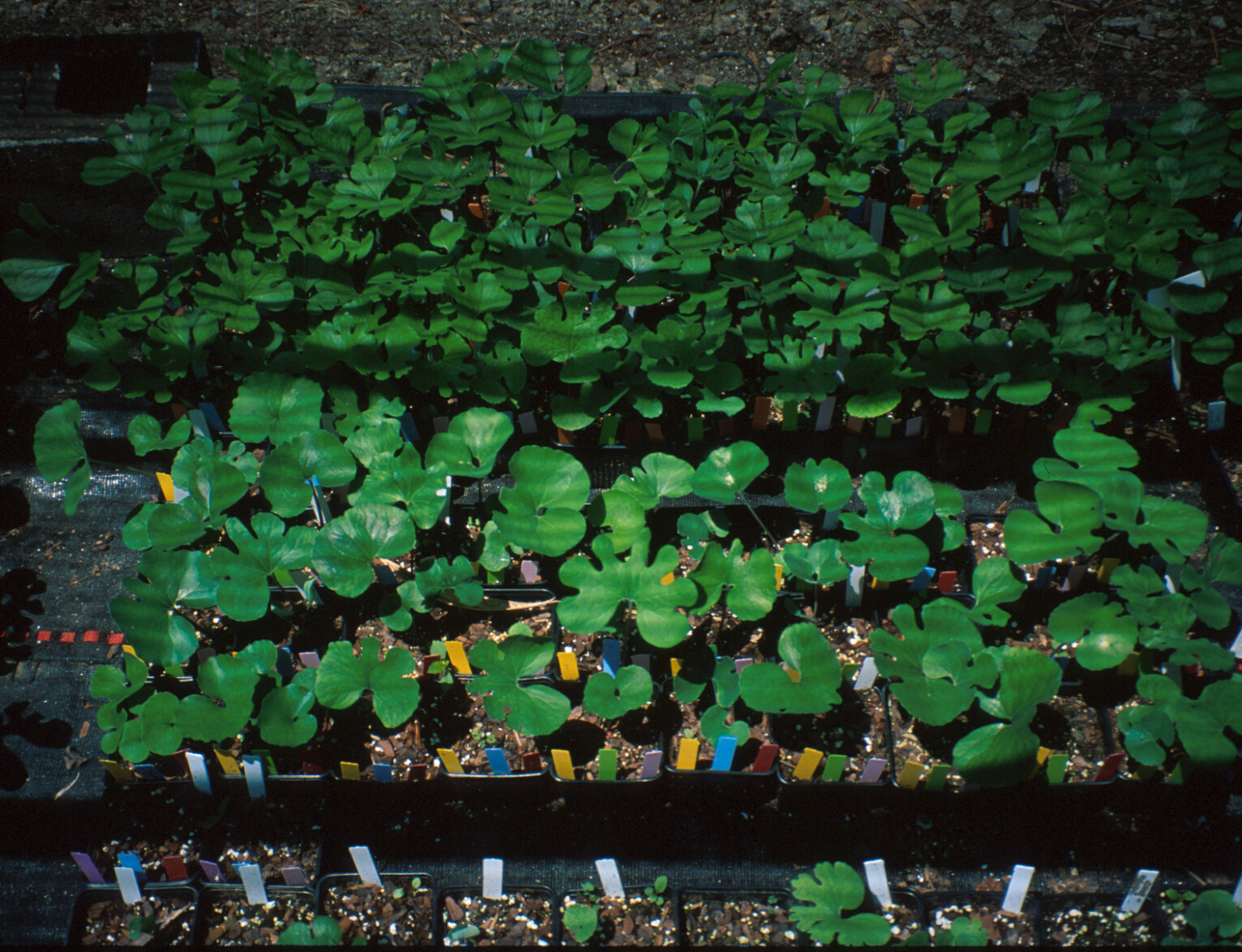
Research on propagation and domestication potential is necessary before wild medicinal plants can be grown commercially. One of Dr. Affolter's graduate students explored cultivation methods for bloodroot (Sanguinaria canadensis) with the University of Georgia Department of Horticulture. Pictured is a bloodroot propagation experiment. Photo by Jim Affolter
Domestication and commercial production of plants for medicinal use may seem like a good solution, yet it can present complications. For some species, horticultural practice has not been developed. In these cases, production on an economical scale requires research, and even then may not be feasible. One example is bloodroot (Sanguinaria canadensis), a lovely herbaceous spring ephemeral found in rich deciduous woods. Its rhizomes are rich in a bright red alkaloid known as sanguinarine, which has antibiotic, anti-inflammatory, and anti-tumor properties. Harvested on a small-scale, the plant is used for a variety of medical purposes by locals. Some years ago, livestock producers were also interested in using sanguinarine as a feed additive, which threatened to skyrocket demand and threaten populations. Dr. Affolter initiated a research project in which two graduate students examined the growth of bloodroot and factors influencing concentrations of sanguinarine. The plant didn’t prove to be very economical to grow at a commercial level. In the end, a related species, plume poppy (Macleaya cordata), that produces lower concentrations of sanguinarine, but is coarser and more aggressive – and thus easier to cultivate, was selected to supply the feed industry.
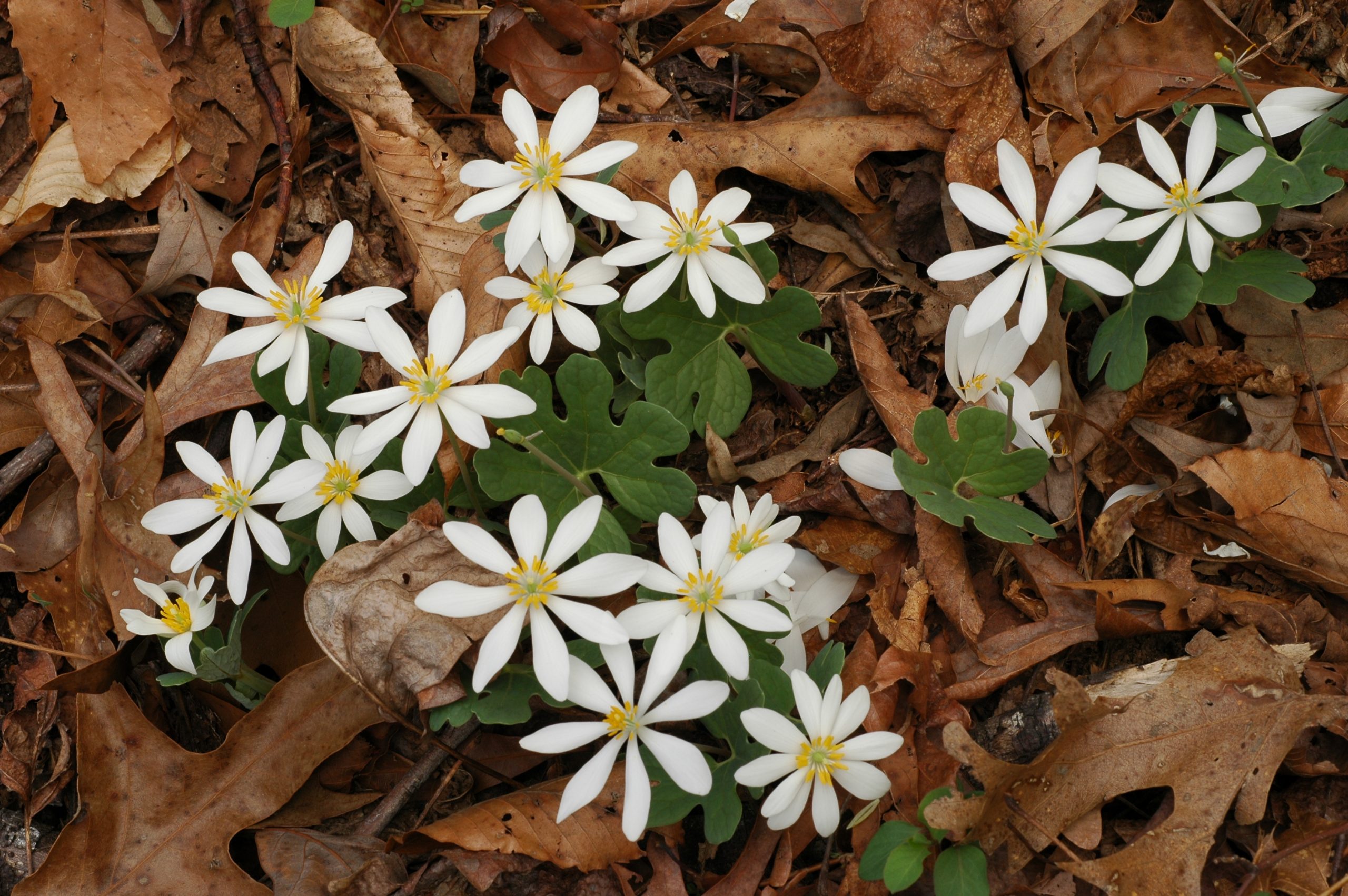
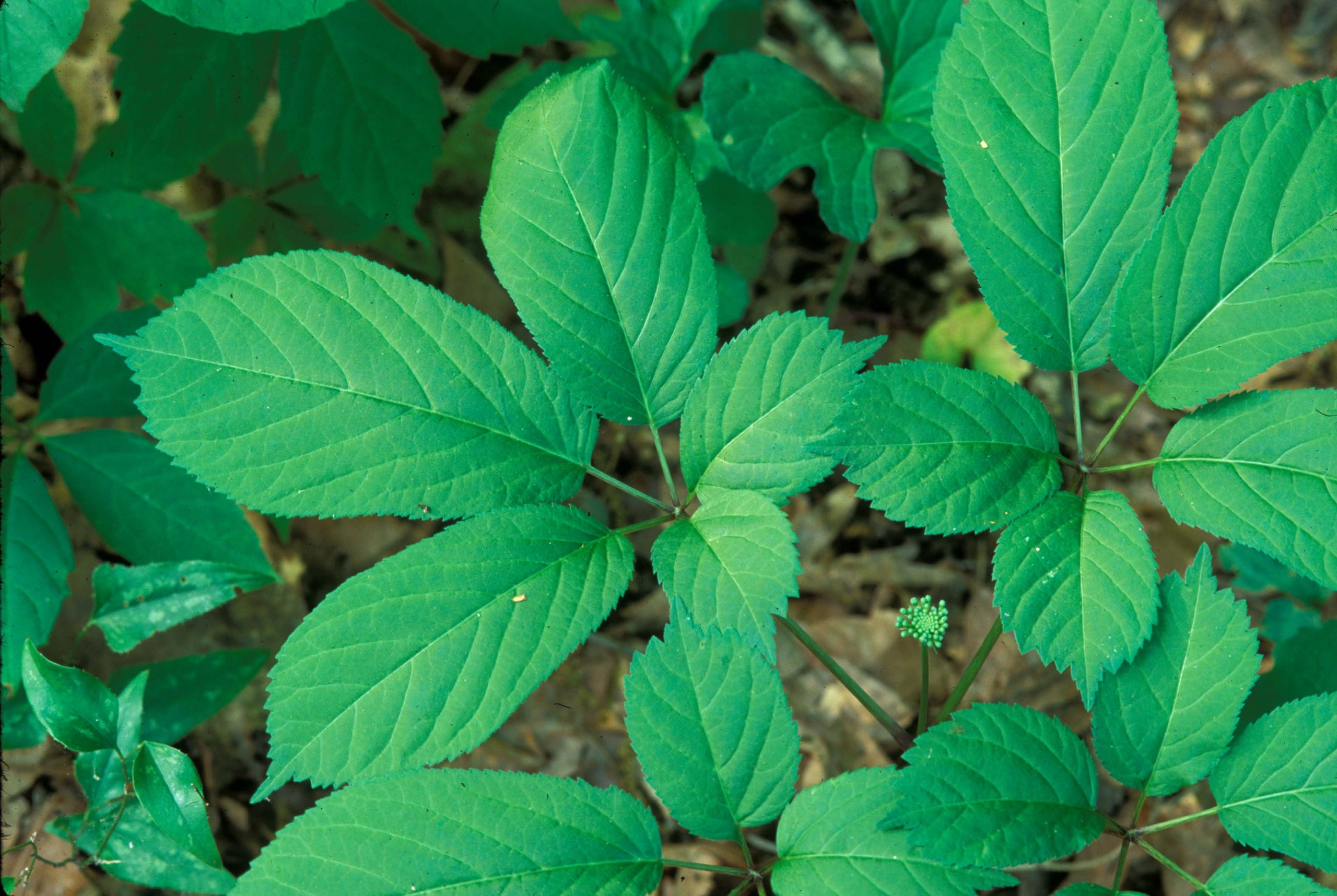
Even when commercial operations are viable options, they aren’t always welcome. Dr. Affolter described a recent rise in ‘outsiders’ from the Northeast working to turn former tobacco farms and other mountain properties in western North Carolina towards production of locally harvested medicinal plants. The local community, who considers the wild harvest and use of these plants as part of their local economy and cultural identity, saw these operations as threats. Despite such setbacks, progress is being made on the ‘conservation through cultivation’ front. Dr. Jeanine Davis, in the Department of Horticultural Science at North Carolina State University, and her co-author, W. Scott Persons, present a wealth of knowledge and guidance for local growers in their book, Growing and Marketing Ginseng, Goldenseal, and Other Woodland Medicinals.
Meanwhile, strategies for ethical foraging of some of the southeast’s medicinal plants are in development by the State Botanical Garden of Georgia and partners on the University of Georgia campus. This includes defining what ethical foraging looks like for these species, and bridging the gap between foragers and regulators – agency and public land managers who permit, monitor, and enforce forest product harvest. Data collected through surveys and workshops will help to clarify agency and foraging community concerns and suspicions, guiding the project as it develops. A key goal is to avoid a ‘tragedy of the commons’ scenario in which lack of private ownership and responsibility leads to overharvest, while still allowing economic and cultural practices in public spaces.
Although harvesting pressures may threaten local populations, most native species of medicinal plants are not endangered on a global level and therefore not the direct focus of conservation projects at the State Botanical Garden. Yet sharing information about medicinal plants often provides a hook that allows the Garden to educate the public about plants. Their Native Plant Certificate Program offers electives focused on medicinal plants and local species. Dr. Affolter teaches a popular undergraduate class titled Herbs, Spices and Medicinal Plants. He observes that many of his students, interested in the uses of local plants or disillusioned with modern health care, find their eyes “opened to a whole new world of health care and the healing power of plants.” Sparking an interest in medicinal plants invites exploration – often in a hands-on way – of the wonders of plants, leading to an increased appreciation of and interest in conservation.
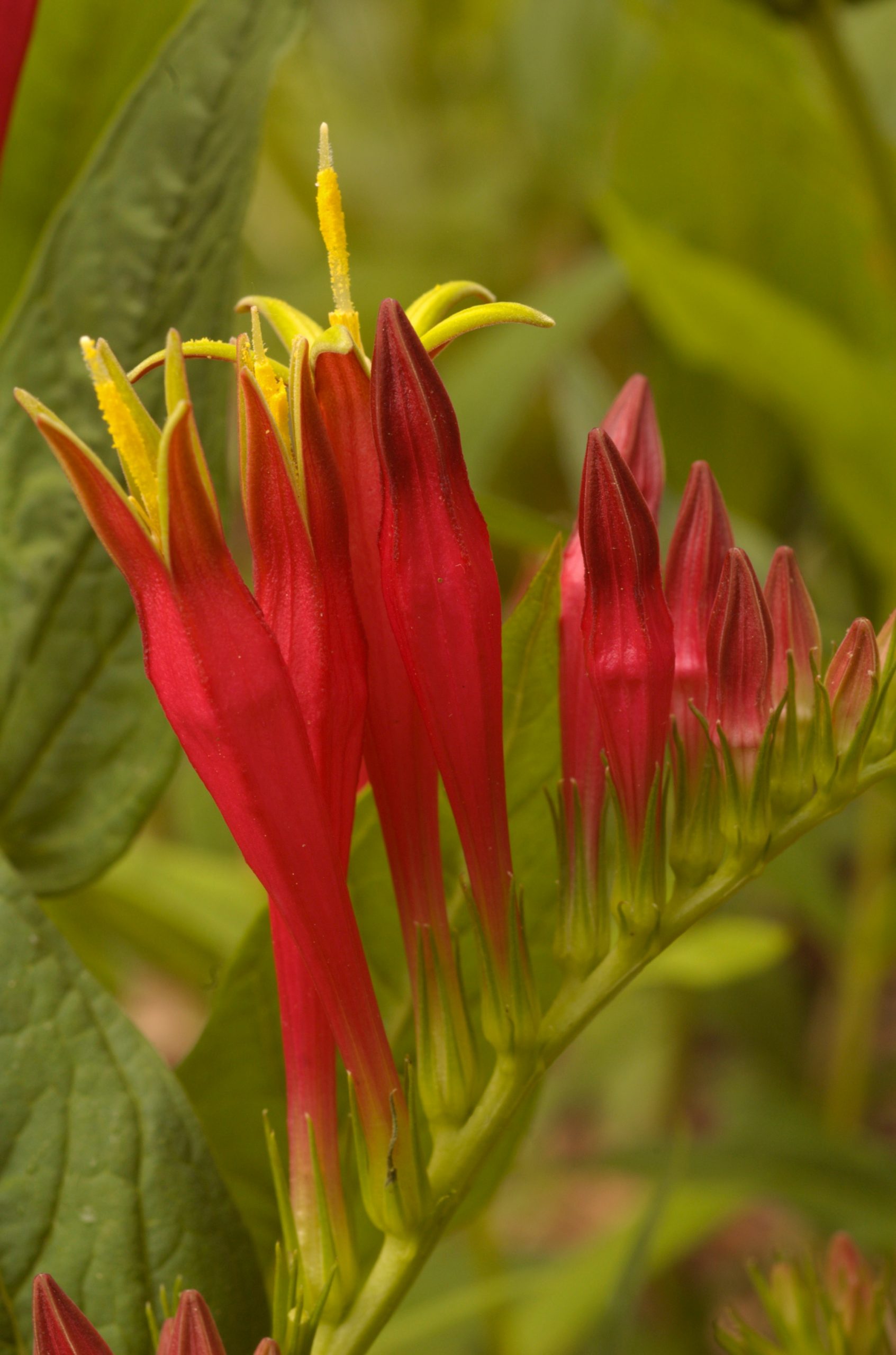
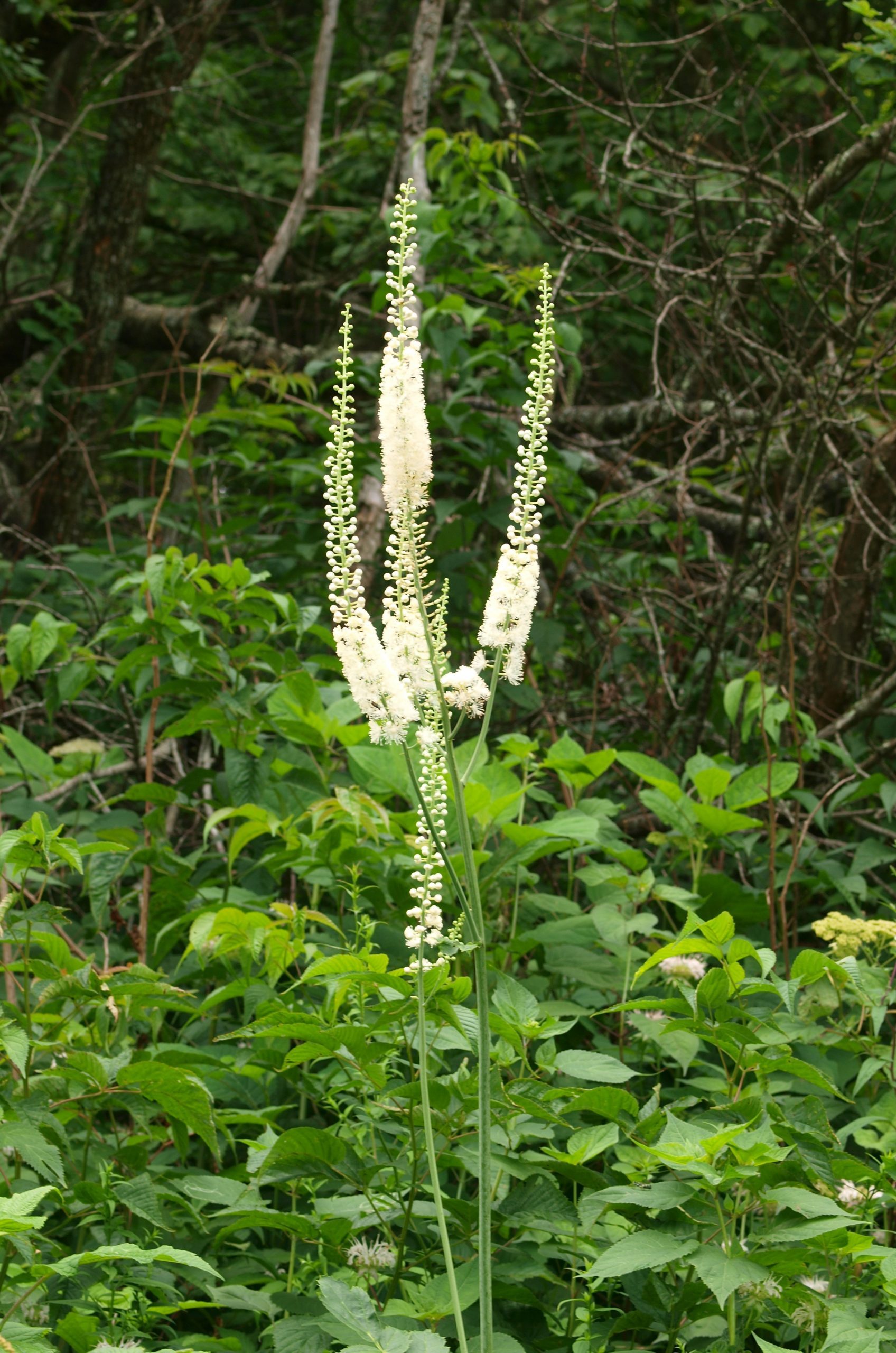
Carolyn Schmitz and Tony Schmitz
Art and a deep love of nature run in the Schmitz family. Carolyn Schmitz, a Prescott, Arizona-based artist, and her brother, Tony Schmitz, an animator and filmmaker, recently partnered with CPC President and CEO Dr. Joyce Maschinski to promote CPC’s mission to save rare plants. Their medium is a new one for CPC: animated video. The vibrant, inspiring production takes viewers of all ages on a journey to discover what life would be like without plants. The video demonstrates the power of art to connect and inspire people. Its message is simple, yet powerful: plants matter, they have a profound impact on all life on Earth, and we all have a responsibility to protect these precious resources. In honor of their artistic and creative contributions to Save Plants, we honor Carolyn and Tony as our June 2021 Conservation Champions.
When did you first fall in love with nature?
Carolyn: My first home in rural Missouri was a treasure trove of animal and plant life. There were wild roses and stinky fungi. Crawdads and rabbits. Thorny trees and mossy springs. Flowering glens and murky ponds. When I was seven, my family moved to Arizona, where a new world of botanical and geological wonders swept me away. I will never forget when I first saw saguaros, in 1953 on our drive from Prescott to Phoenix. At that time, Black Canyon Highway was a dirt road, dropping down from the mesa into the desert, and there were the giant cacti, somehow anchored upright on the steep slopes! The biggest bonus is that I never fell OUT of love with nature. All children should be so lucky! Imagine how much safer this earth would be in our hands if this were so!
Tony: Until I was twelve, our family lived in the country on 35 wooded acres south of Kansas City, Missouri. I spent many hours playing around a nearby pond or along a creek that wound through the red oak and birch trees. A chorus of cicadas was the sound of my summer. There was a stand of black walnut trees that shaded my mother’s garden of tomatoes, cucumbers, and rhubarb. When the black walnuts fell, the snow would not be far behind. Those sights and smells, and how all of nature responded to the changing of the seasons, left their indelible imprint.
What do you feel is the power of art to inspire people and connect them to nature?
Carolyn: Because I am an artist, it is obvious to me that people desperately need art. There is so much in nature to lift our spirits and heal our souls. We live in the Garden of Eden! I can only assume that what inspires me, also inspires and renews others. Art is one way to bring nature to people.
Tony: One of my earliest projects working for Public Television as a filmmaker was a series on contemporary Native American artists. I spent many weeks among the Navajo and Pueblo Peoples in Arizona and New Mexico. They were painters, potters, and jewelry makers. Their modern art carried the influence of an ancient tradition of art, whose purpose was to interpret the world and connect people to the land that sustained them. Through them, I learned the power of art to connect people to nature. Art bypasses the mind to touch the heart.
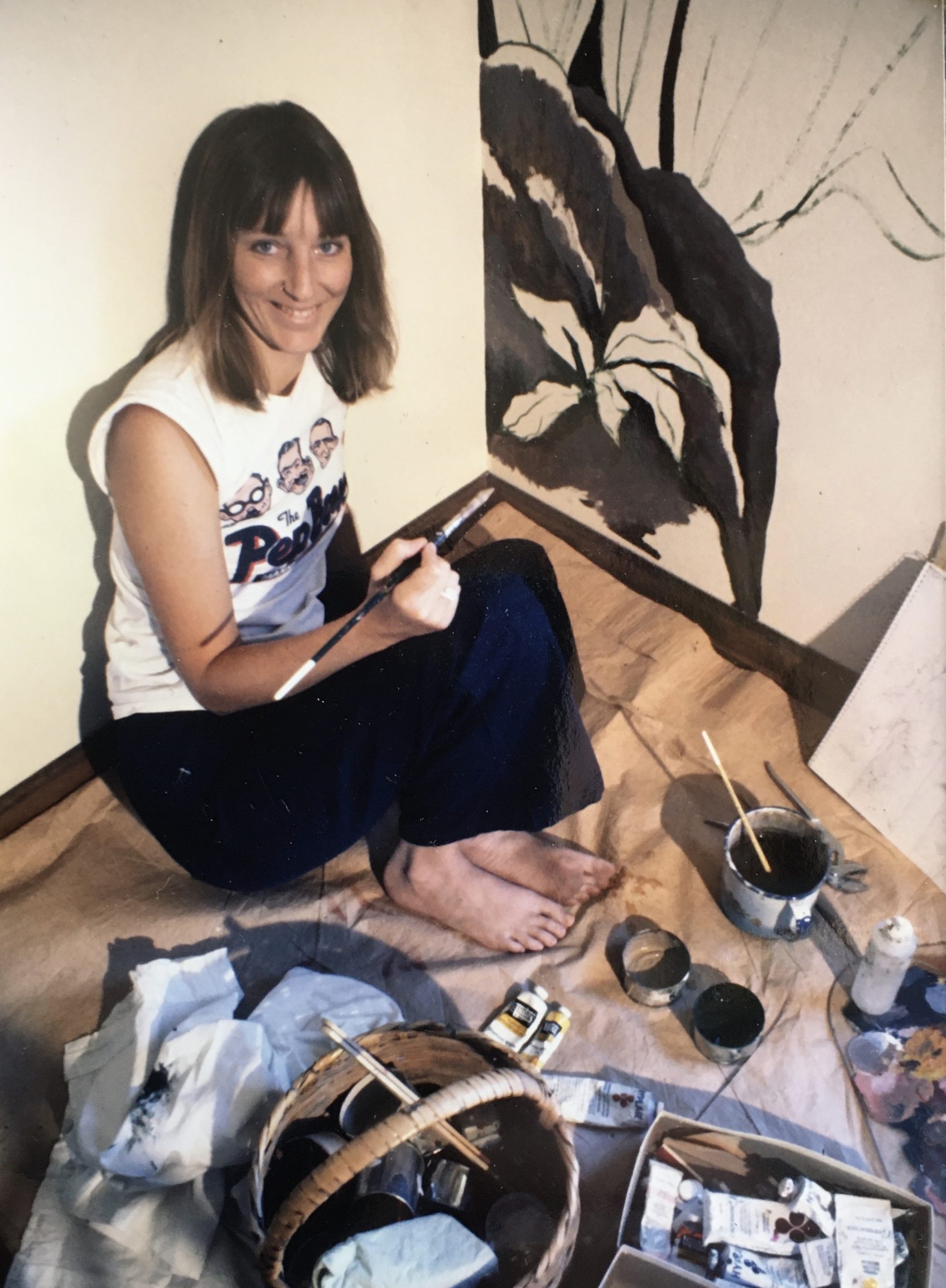
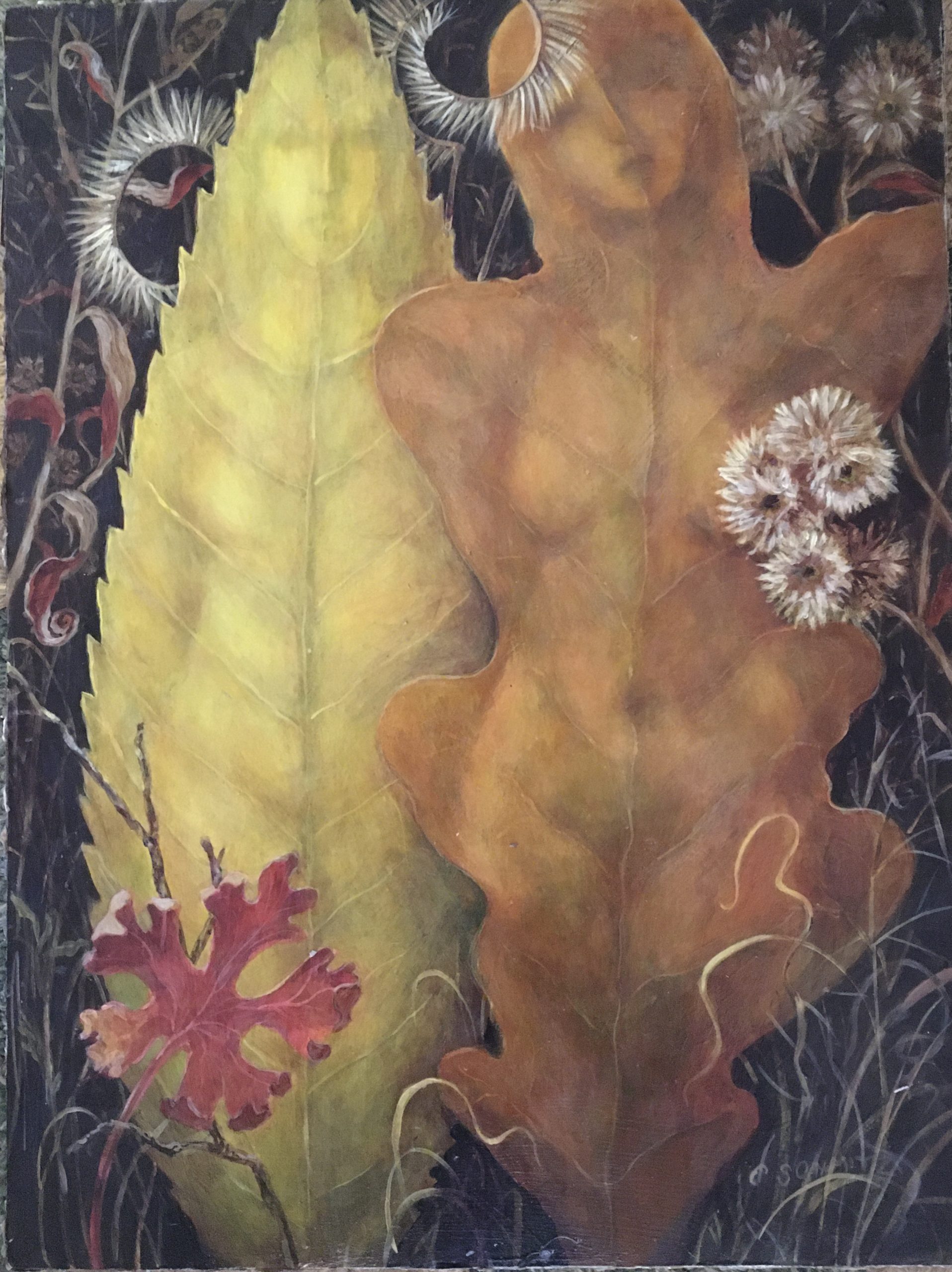
What was your inspiration for the new animated “Save Plants” video?
Carolyn: Growing up in the early ’50’s, when TV first settled into our homes, I was of course a child of Disney, feasting on animated cartoons and films. I saw that animal characters could convey messages to reach all kinds of people. Using the animals familiar to me, I chose two Gila monsters for the Save Plants video because of their striking appearance, humor, and vulnerability. Other small desert creatures either whispered or shouted, depending on their personality traits. An owl seemed ideal to express gravity and urgency. Even the darkling beetle, an equally beloved member of our forest community, was given a role.
Tony: When doing background reading in preparation for the project, I found fascinating science about the role of plants in transforming a molten rock into a habitable planet (“Making Eden,” by David Beerling). Carolyn’s animal characters seemed like the perfect intermediaries to carry the message about the importance of plants. Animals are our ambassadors from the natural world. They teach us through their ingenious ways of interacting with the plant world.

What was the creative process like as you brought the “Save Plants” video to life?
Carolyn: Tony and I both worked on creating the story. We hashed out about a half dozen versions. Because I had never done an animated film, there was an enormous learning curve! Whenever I felt stuck, I tapped into my emotions and transferred them to the animals. For example, [there were] times I felt like screaming to get the message about the danger to plants to penetrate deaf ears, so I chose a ground squirrel using a trumpet-like Datura flower to amplify his tiny voice.
Tony: Once we had settled on the storyboard, Carolyn began creating the paintings for each scene. She sent me her two-dimensional art and I transformed it into three-dimensional action. Using Photoshop and Adobe After Effects, I separated the paintings into layers and created movements for each of the layers independently. I sent a first draft of the movements to Carolyn, and she often modified the painting, knowing what was possible. There was a lot of back-and-forth collaboration before settling on the final version of a scene.
Why does CPC’s mission to safeguard rare and endangered plants resonate with you?
Carolyn: Living in the same spot for over 65 years makes it easy to see the rapid changes in our environment–how vulnerable plants are not only to changes in temperature, weather patterns, and moisture, but also to the brute force of humans and machines. Decades ago, towering stands of grape ivy climbed to the tops of the ponderosas. Now they can barely get off the ground. Dense colonies of wild roses once crowded the rocky stream beds. Now we can hardly find any of them. The willows, walnuts, and cottonwoods that were like family are gone. During my years as a freelance illustrator, I worked for landscape architects who pioneered the use of indigenous plants and established nurseries to propagate them. Thankfully, they and organizations like the CPC are coming to the rescue.
Tony: I look at plants differently now. Though I’ve long been aware of human impact on our planet’s biome, the message and work of CPC resonated even more deeply. The fact that some plants will never more be seen on earth, not because of natural causes but because we made it happen, is so symbolic of the danger in which we have put ourselves.
What message(s) do you hope viewers will take away from viewing the “Save Plants” video?
Carolyn: I want viewers to appreciate the rarity and preciousness of this entire planet. To understand what can happen when the needs of one species throws all the others into peril. What people value, they protect. If we are as smart as we think we are, we will find ways to keep people and plants in balance.
Tony: I hope people take the coyote seriously – no plants, no animals, no people!
A Springtime Voyage to the Greek Islands with CPC
Plants have been important to humans since time immemorial. Woven into everyday life, plants were an integral part of every custom, celebration, and cuisine throughout the ancient world. Ancient kings supported explorations of the known world not only to obtain precious metals, but also to harvest the valuable treasures of the plant world – herbs, spices, perfumes, and incense. By doing so, they ensured the health and prosperity of their people and a long-lasting legacy for their civilization. In the classical Greek period, Hippocrates (460-370 BCE), known as the father of modern medicine, and Aristotle (384-322 BCE), a philosopher who wrote extensively on the diversity of plants and animals, recognized the intrinsic role of plants in supporting a thriving civilization.
Today, we invite you to experience the homeland of Hippocrates and Aristotle by joining the Center for Plant Conservation on a journey to Greece – one of the world’s most botanically and historically rich regions! The 12-day trip, from April 19-30, 2022, includes a cruise to the fabled Greek Islands and Epheseus aboard the elegant Elysium, a vessel akin to a private yacht.


This springtime visit is a perfect time to see carpets of wildflowers, migratory birds, ancient monuments, and art. The Mediterranean basin is a biodiversity hotspot – Greece and the Aegean Sea Islands are home to more than 5,800 species of vascular plants, including nearly 200 orchid species.
Throughout the journey, Dr. Joyce Maschinski, President and CEO of the Center for Plant Conservation, will share tales about the Greek gods’ connections to the plants, discuss names and medicinal values of key local plants, and highlight some of the current conservation efforts to assess and protect the wonderful diversity of this beautiful region. Dr. Nigella Hillgarth, former President and CEO of the New England Aquarium, will discuss the natural world, with special emphasis on the birds of the region. Local experts in archaeology, history, and botany will guide us daily at each of the 14 locations visited on the trip.

Join us next spring to experience natural beauty and marvels both ancient and modern in the gardens of the gods. For more information and to reserve your spot, please contact:
Colin Church
Manager, Guest Sales and Services | Thalassa Journeys

As Seen on Rare Plant Academy
During the 2020 Southeastern Partners in Plant Conservation conference, Ph.D. candidate and podcaster Matt Candeias shared his thoughts on combating plant blindness. Plant biologists have often tried to convince the public that plants are important by drawing attention to their value to humans (see this above in this newsletter issue). This approach has limits in which plants it applies to and the effectiveness of getting people to care about plants. To succeed in saving plants, it is important to inspire people to care about them. Matt suggests fostering a new-found respect for plants as living, breathing, fighting organisms upon which all other forms of life depend. Plants have a wealth of stories of struggle for survival that can captivate. The best approach is to vary the types of stories shared – no story is universally beloved, and different people have different interests. Hear more of Matt’s thoughts on science communication for plants on Rare Plant Academy.
Get Updates
Get the latest news and conservation highlights from the CPC network by signing up for our newsletters.
Sign Up Today!Employment Opportunities
Requisition No: 379523
Agency: Agriculture and Consumer Services
Working Title: BIOLOGICAL SCIENTIST III – 42003742 1
Position Number: 42003742
Salary: $36,467.60 – $45,584.50
Posting Closing Date: 07/01/2021
BIOLOGICAL SCIENTIST III
FLORIDA DEPARTMENT OF AGRICULTURE AND CONSUMER SERVICES
FLORIDA FOREST SERVICE
***OPEN COMPETITIVE OPPORTUNITY***
CONTACT:
Kristin Bennett, (863) 940-6710, Corey Walk, (863) 589-0528
MINIMUM REQUIREMENTS:
A bachelor’s degree from an accredited college or university with a major in one of the biological sciences and two (2) years of professional biological experience in a field or laboratory program; or
A master’s degree from an accredited college or university in one of the biological sciences and one (1) year of professional experience as described above; or
A doctorate from an accredited college or university in one of the biological sciences.
Certain positions within this class require individuals to meet specific federal or state regulations as identified by the employing agency.
Requires possession of a valid driver license.
JOB DUTIES:
This professional position is responsible to the Forestry Resource Administrator. This person will work to plan, develop, and coordinate land management practices that enhance and protect natural plant communities and animal species on Lake Wales Ridge State Forest and other state lands as needed. Specific examples of work performed include, but are not limited to, the following:
Survey mapped populations of 16 federally listed species at Lake Wales Ridge State Forest (LWRSF); update GPS/GIS (Global Positioning System /Geographic Information) maps of populations (or individuals if n<100) of listed species. Conduct floristic surveys on the state forest and assist in floristic surveys on other public lands as needed.
Develop and implement demography projects (i.e., monitor tagged individuals) for at least half of the 8 species subject to level 3 monitoring in order to determine their management requirements. Small, medium, and large populations should be selected so that trends can be detected. Coordinate with outside researchers to avoid duplication of effort in plant demography projects.
Develop Scrub Maintenance Project by establishing a written monitoring protocol to track the success of the application of high intensity prescribed fire to maintain habitat requirements of scrub endemics.
Assist with the Sand Pine Scrub Co-operative Research Project being conducted in collaboration with ecologists from the Department of Environmental Protection, Archbold Biological Station, and The Nature Conservancy.
Work with the forester on timber harvest planning in sand pine scrub and cutthroat grass. Continue vegetation-monitoring project and coordinate with the forester on effects of logging on listed species in sand pine scrub.
Provide input for burn planning on the state forest and conduct post burn analysis and monitoring of plants.
Conduct field research projects (responses to disturbances, seed viability, etc.) to improve understanding of the effects of management activities on any of the 16 listed species where current knowledge is lacking. Coordinate and collaborate with outside researchers to avoid duplication of effort in these areas.
Assist in the development, administration, and implementation of ecologically sound forest management prescriptions that promote native habitat integrity and protect rare, threatened, and endangered species of plants and animals. Promote the enhancement of these populations through specific habitat controls. Coordinate ecosystem management practices with federal, state, other local agencies and appropriate environmental private organizations to ensure a blended, well-balanced management program for these species. Survey, inventory, and monitor rare, threatened and endangered species of flora and fauna and maintain a permanent record of essential information for future management purposes. Attend and be involved in the Lake Wales Ridge Ecosystem Working Group.
Assist other Florida Forest Service (FFS) biologists in conducting routine field inspections to inventory and monitor condition of forest units, habitats, and plant populations. Assist other state agencies with preparation and update of natural areas inventory as regards rare plants. Coordinate with other FFS biologists in the relocation of threatened and endangered species and evaluation of ecological mitigation projects.
Perform other related duties as assigned including the proper maintenance of all assigned equipment and vehicles
Full posting here.
Job Summary
AECOM is actively seeking a highly motivated Biologist for immediate employment in our southern California Natural Resources Group in the Los Angeles, CA office. This position would support numerous natural resource projects in the southern California region with a focus on wildlife biology and/or botany. Primary duties include general biological surveys for wildlife, plants, and/or vegetation, electronic data collection, and preparation of technical reports. Additional duties may include assisting on botanical surveys, listed species surveys, conservation plans, and habitat management plans, or assisting with natural resources related field surveys. Experience conducting general species surveys for avian (including nest searching), herp, mammal, and invertebrate species, and/or experience conducting botanical surveys and vegetation characterization and mapping desired.
The responsibilities of this position include, but are not limited to, those listed below:
- Perform assignments that require background in wildlife ecology and/or botany and ecological processes.
- Conduct biological survey fieldwork as part of a team and alone in coastal, inland, and desert environments, which can include rugged terrain.
- Identify and record native and non-native fauna and/or flora in the field.
- Utilize electronic data collection methods and manage data, as needed.
- Conduct writing assignments, including completing survey reports, Biological Technical Reports, Mitigation and Monitoring Plans, Biological Assessments, and/or EIR/EIS sections.
- Possess knowledge of major state and federal agencies (e.g., USACE, USFWS, BLM, CDFW, RWQCB, and CCC) and major regulatory frameworks (e.g., NEPA, CEQA, ESA, CESA, CFGC, CWA and CCA as well as knowledge of regional conservation planning (i.e., MSCP, MHCP, MSHCP) and apply to assigned tasks.
- Support proposal efforts.
- Work under supervision of a senior project manager or senior-level team member
- Ability to independently manage projects or tasks and/or oversee project teams
- Ensure assigned tasks stay on schedule and budget.
- The ability to work independently and as part of a team; be innovative and a problem solver.
- Occasional travel will be required.
Full announcement and application here.
Job Summary
AECOM is actively seeking a wetland ecologist/biologist for our Natural Resources Group to be based in our San Diego, CA office. This position would support numerous natural resource projects in the southern California region with a focus on wetland delineation and related field assessments and wetland permitting services.
The responsibilities of this position include, but are not limited to:
- A background in wetland ecology and knowledge of permits and regulations of the waters of the U.S. and state of California. Experience in arid west wetlands, streams, and riparian habitats is preferred.
- Experience in biological survey fieldwork (coastal, inland, and desert)
- Ability to conduct jurisdictional delineations is required.
- Native plant species knowledge and identification, including field experience.
- Writing and organizational skills and experience preparing jurisdictional delineation reports.
- Knowledge of major state and federal agencies (e.g., USACE, USFWS, CDFW, and RWQCB) and major regulatory frameworks (e.g., NEPA, CEQA, CWA, ESA, CESA, and CFGC).
- Experience in preparing permit application packages (including CWA Section 404/401, CFGC Section 1600-1616) is required.
- Experience in agency coordination necessary to attain wetland permits is preferred.
- The ability to work independently and as part of a team.
- Be a problem solver for issues related to wetland ecology, wetland regulations, watershed evaluations, habitat restoration, and/or natural resources management.
- Independent task management skills, ability to ensure projects stay on schedule, manage task budget.
- Contribute to business development efforts in pursuit of new projects.
- Prior consulting experience strongly preferred, but non-consultant candidates with relevant experience will be considered.
- Experience in California is a must. Experience in southwest U.S. is also favorable.
AECOM is proud to provide our employees with exciting, challenging projects and opportunities to grow their careers.
Full announcement and application here.
California Native Plant Society Unveils Major Update to the Online Rare Plant Inventory
June 2nd we officially announced the new, fully updated CNPS Online Inventory!
Please see our Press Release. We couldn’t have made this happen without receiving the largest contribution from CPC through the state of California and California Plant Rescue initiative. Many thanks to you all and everyone involved! Some of the highlighted changes are listed below.
What’s new?
The update integrates data maintenance performed within the same web-based program, meaning that updates and changes are made live for immediate use in searches to help inform conservation priorities. Highlights from the previous version include:
· Mobile friendly – Take the Online Inventory with you!
· Full data search bar is now included at the top menu on every page for quick access to make new searches.
· Easier to access links and a new Download Report function for every plant’s details.
· Intuitive search display: add or remove columns by button clicking, quick click column sorting, and easy drag and drop column re-ordering.
· New “Other Status” section includes information on seeds that have been banked as part of the California Plant Rescue initiative, BLM and Forest Service sensitive designations, and IUCN Red List imported from the CNDDB.
· Maps are back and selecting quads on a map in Advanced Search has never been easier!
· Regular imports of rare plant quads and counties from the California Natural Diversity Database (CNDDB), including updated quads and counties for all CRPR 3 and 4 plants.
· New Help page describes how to search and view data.
· Fully updated Glossary – all data fields are now fully described.
· Completely new Status Review Documents page! Download PDF copies of CNPS status reviews published since 2003.
· Three plant photos instead of one (see note below).
When using the new Online Inventory, you may notice that many rare plant photos are missing. This is due to an inability to transfer the photos displayed from the past version. The plus is that the new Rare Plant Inventory allows for easy photo integration and management using links from CalPhotos. We are seeking volunteers that have a lot of experience with rare plants of an area to help add photos. The process is simple. Please inquire with us at rareplants@cnps.org if interested in helping out with this effort!

Oak Spring Garden Foundation’s 2022 Fellowship in Plant Conservation Biology
In 2022 the Oak Spring Garden Foundation will award our annual Fellowship in Plant Conservation Biology to one outstanding, early-career practitioner, scholar or scientist working on issues related to plant and landscape conservation in the broad sense. This is our most prestigious award for practicing plant conservation biologists. The award includes a $10,000 individual grant and requires a two-to-eight-week stay at Oak Spring. This fellowship will be granted to an exceptional individual who is engaged nationally or internationally in research or conservation action to help conserve plants, and the landscapes and ecological systems of which they are part.
The individual selected for this award will spend 2 – 8 weeks at Oak Spring where they will be able to meet with staff, explore our 700-acre landscape and our efforts in sustainable land management, and visit our rare book library that holds over 19,000 objects, including many examples of botanical art. The Fellow will have ample time and space to work independently on their own projects during their stay. The only requirement during their time at Oak Spring will be to give one 45-minute presentation with time for questions, to Oak Spring staff and any other fellows or residents who might be on site.
Eligibility:
Eligible applicants must be early-career practitioners, scholars or scientists, not enrolled in an undergraduate degree program in 2022. The successful Fellow must be self-directed and able to work independently while on site. Applicants are expected to show dedication in their work in plant conservation in the broad sense, exceptional promise, good communication skills and excellence in what they have accomplished or plan to accomplish.
Dates:
The dates of the Fellow’s residency will be scheduled in consultation with OSGF staff and should fall between Sunday, May 15, 2022 – Saturday, September 24, 2022.
Other information:
The selected Fellow should make travel arrangements to Dulles International Airport, where Oak Spring will arrange transportation for them to our estate in Upperville, VA. The Fellow will resident in a nicely appointed, self-catering accommodation during their time at Oak Spring. The fellow will have a private bedroom and bathroom, and share a living room and kitchen.
Selection:
A jury of established conservation biologists will review the applicants and select the 2022 Oak Spring Garden Foundation Fellow in Plant Conservation Biology.
More information and application here.

Oak Spring Garden Foundation’s 2022 Fellowship in Plant Science Research
In 2022 the Oak Spring Garden Foundation will award our annual Fellowship in Plant Science Research to one outstanding, early-career plant scientist, with preference given to scientists working in organismal plant biology. This is our most prestigious award for practicing plant scientists. The award includes a $10,000 individual grant and requires a two-to-eight-week stay at Oak Spring. This fellowship will be granted to an exceptional plant scientist whose research shows remarkable promise to contribute to a deeper understanding of organismal plant biology, including plant ecology.
The individual selected for this award will spend 2 – 8 weeks at Oak Spring where they will be able to meet with staff, explore our 700-acre landscape and our efforts in sustainable land management, and visit our rare book library that holds over 19,000 objects, including many examples of botanical art. The Fellow will have ample time and space to work independently on their own projects during their stay. The only requirement during their time at Oak Spring will be to give one 45-minute presentation with time for questions, to Oak Spring staff and any other fellows or residents who might be on site.
Eligibility:
Eligible applicants must be early-career plant scientists who have completed their undergraduate degree within the past ten years. The successful Fellow must be self-directed and able to work independently while on site. Applicants are expected to show dedication to their work in plant science, exceptional promise, good communication skills and excellence in what they have accomplished or plan to accomplish.
Dates:
The dates of the Fellow’s residency will be scheduled in consultation with OSGF staff and should fall between Sunday, May 15, 2022 – Saturday, September 24, 2022.
Other information:
The selected Fellow should make travel arrangements to Dulles International Airport, where Oak Spring will arrange transportation for them to our estate in Upperville, VA. The Fellow will resident in a nicely appointed, self-catering accommodation during their time at Oak Spring. The fellow will have a private bedroom and bathroom, and share a living room and kitchen.
Selection:
A jury of established plant scientists, and science administrators will review the applicants and select the 2022 Oak Spring Garden Foundation’s Fellow in Plant Science Research.
More information and application here.

ArbNet 10th Anniversary Virtual Conference
Registration is now open for the ArbNet 10th Anniversary Virtual Conference: Partnering to Protect and Plant Trees. September 14-16,2021
ArbNet celebrated its 10-year anniversary on Arbor Day, 2021. Similar to a tree’s growth, forming branches, leaves, and roots, ArbNet has grown significantly, branching out into a worldwide community of arboreta and establishing itself as an internationally recognized, resourceful network over the last 10 years. To commemorate this milestone, The Morton Arboretum will host a conference that recognizes the valuable tree collections and unique expertise of arboreta. ArbNet 10th Anniversary Virtual Conference: Partnering to Plant & Protect Trees will be an opportunity for ArbNet’s community of arboreta and tree-focused professionals to engage with and learn from each other, celebrate institutional and programmatic achievements, and understand how ArbNet can be a resource for their growth.
Donate to CPC
Thank you for helping us save plant species facing extinction by making your gift to CPC through our secure donation portal!
Donate Today